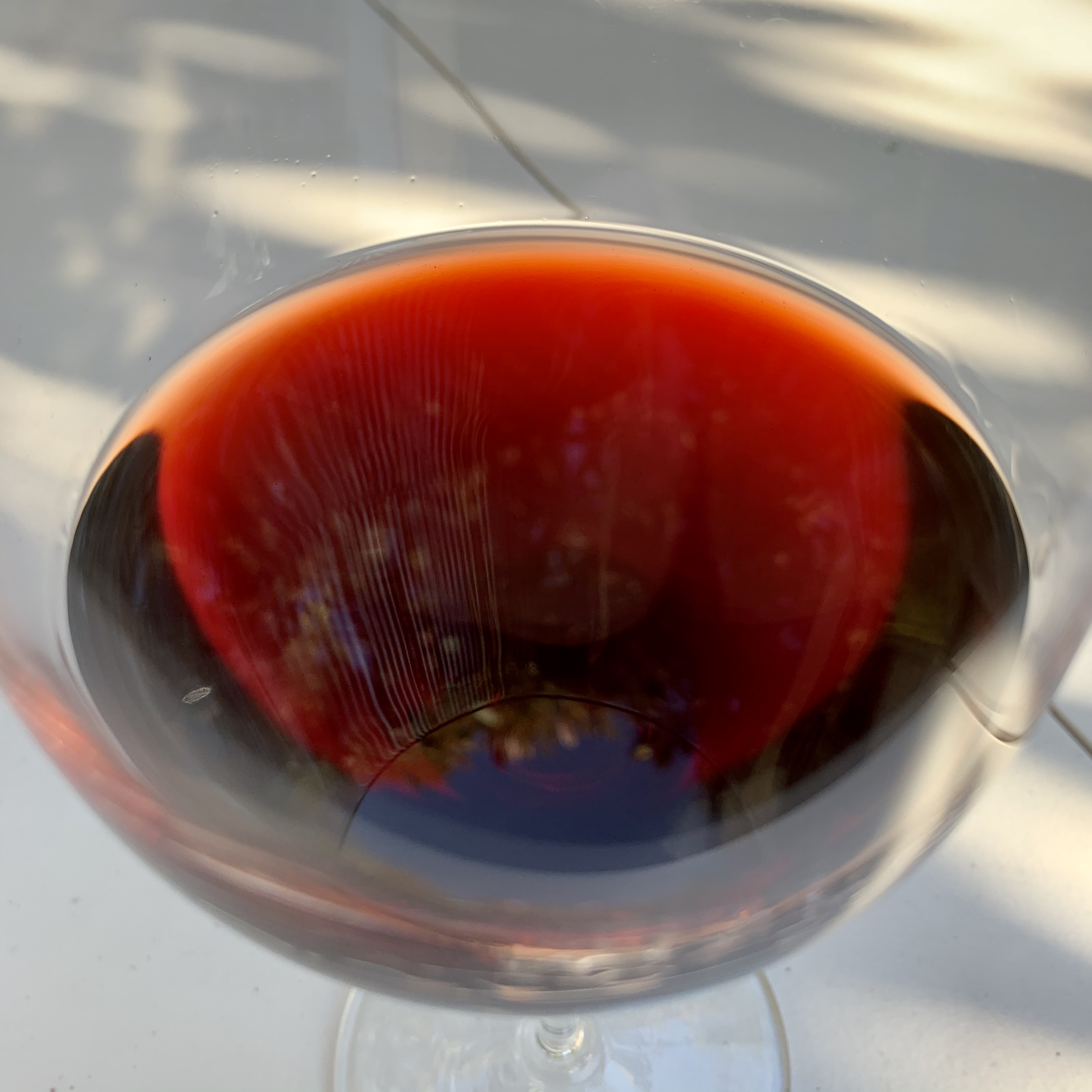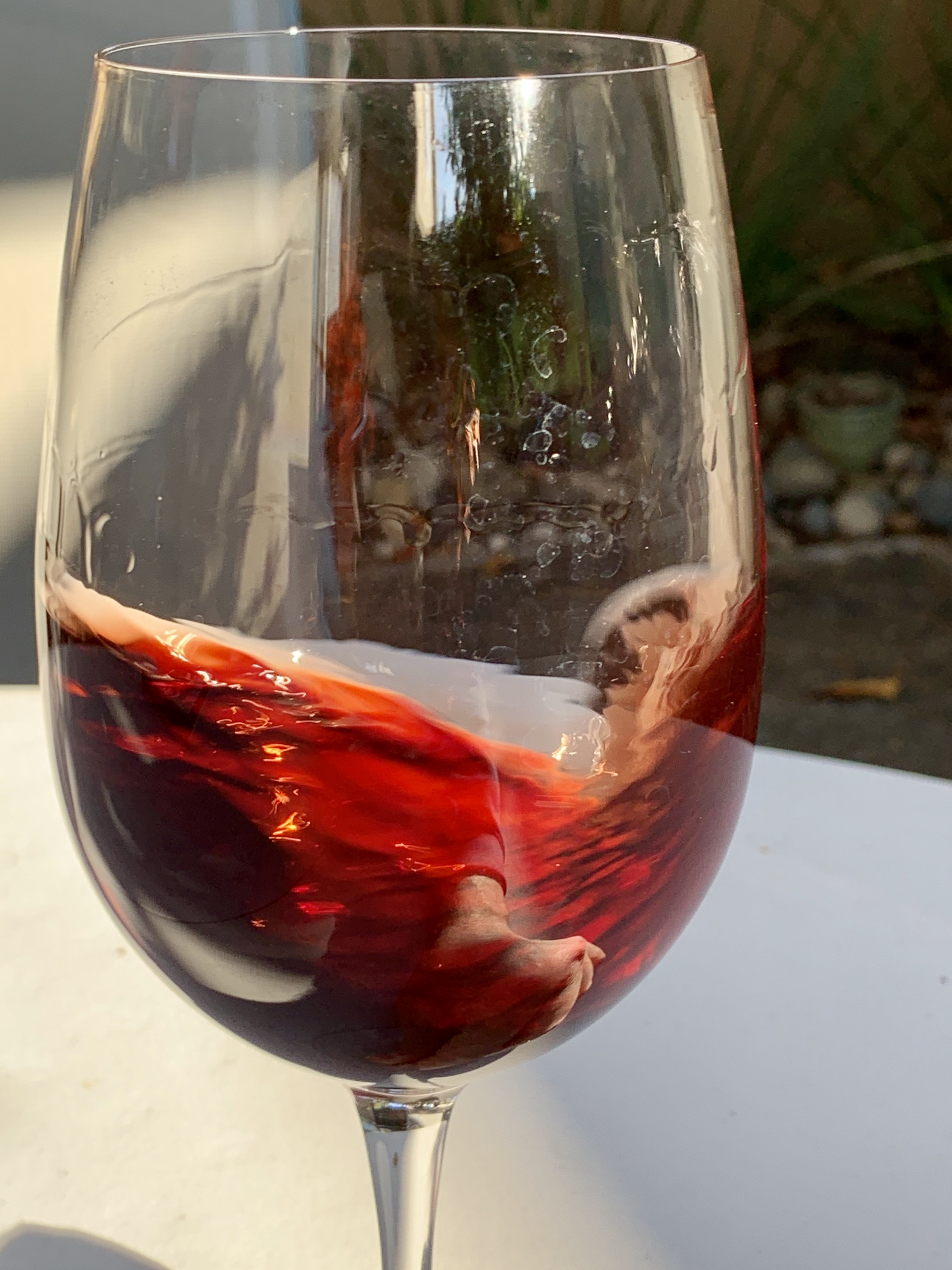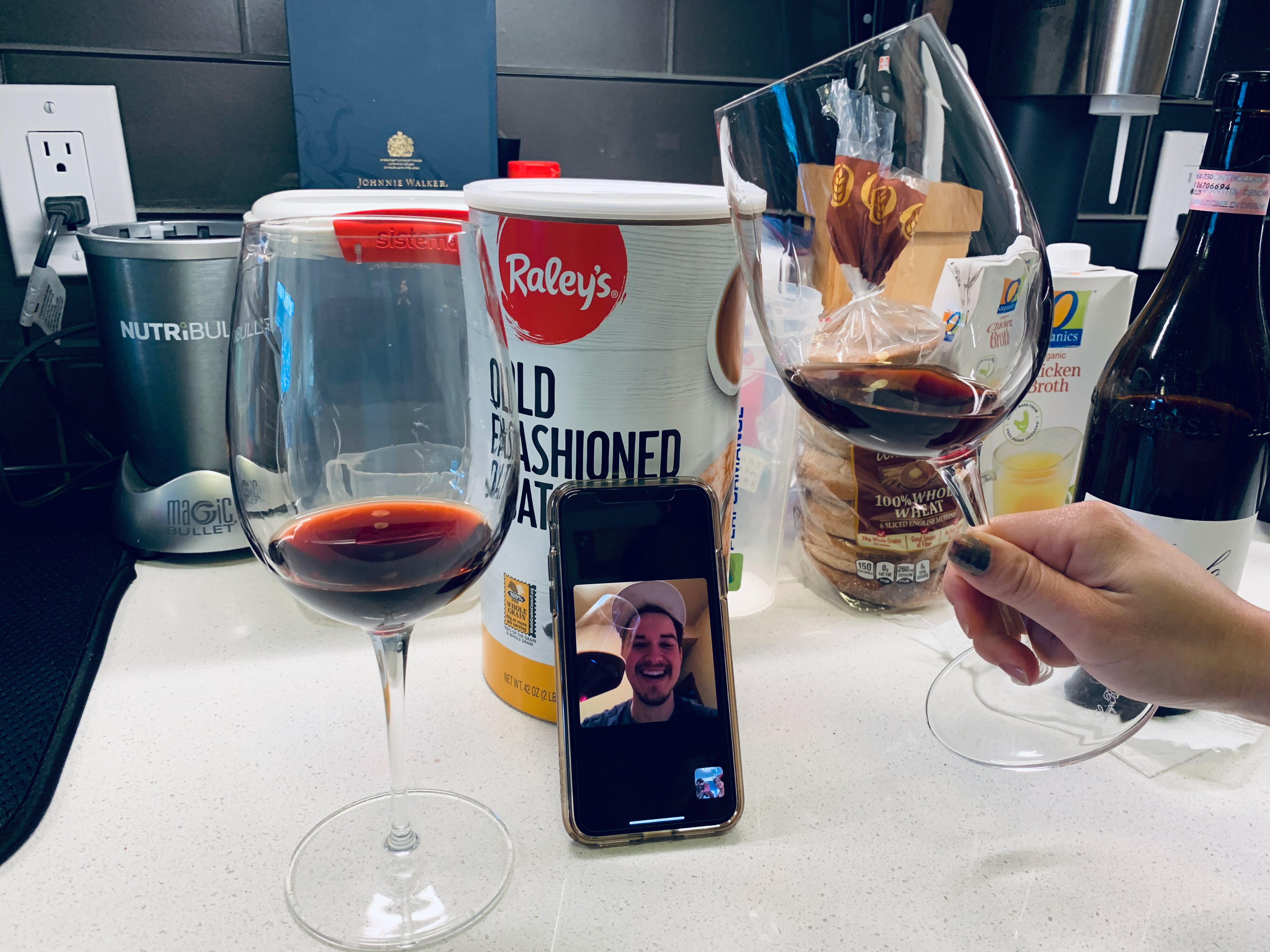Wineoyama #1: 2004 Elvio Cogno Barolo
An introductory word from Dan:
I really enjoy Nebbiolo in general, and Barolo in particular. Barolo can get kind of pricey, so we don’t drink it all the time. But whenever we do have it, it ranges from really good to AMAZING. Most of the great Barolos I’ve had have been 2013/14’s from North Berkeley Imports; these are considered babies as far as Barolo is concerned. Unfortunately, the older vintages are usually prohibitively expensive but are considered by many to be in their “prime”.
Here's a short introduction to the wine and its cultivar, according to Wine Spectator columnist Dr. Vinny:
“...Nebbiolo is the name of the grape that Barolos and Barbarescos are made from. Though small amounts of Nebbiolo are grown all over the world, it’s mostly found in northern Italy, in the Piedmont region. Within Piedmont are two wine-producing zones called Barolo and Barbaresco, whose namesake wines are both made from the Nebbiolo grape. A wine may be labeled as a Nebbiolo if it's made in a region outside Barolo and Barbaresco that permits varietal labeling.
What characterizes Nebbiolo and the wines of Barolo and Barbaresco? I find the wines very distinctive, with aromatic tar, rose, licorice and truffle notes. The wines can be highly tannic and have a reputation for aging well. In general terms, Barolo is the more massive, tannic and rich of the two, while Barbaresco is considered more elegant and approachable.”
We ordered our wines from wine.com for this tasting so that we could easily choose bottles from around the world. For reasons beyond my understanding, they had a 16-year-old Barolo for ~$50, which is (I think) very unusual. Very intriguing... hopefully not too good to be true!
According to Madeline Puckette of Wine Folly fame, a Nebbiolo might be expected to present cherry, rose, leather, anise, and clay pot. I agree with most of those from past experience, with the exception of anise—and I don’t know about clay pots, either. Cherry and floral aromatics are to be expected, in my experience.
One wine critic that I really enjoy reading, and whose taste I often agree with, is Jancis Robinson. This is what she says of Nebbiolo:
“Perhaps the most wonderful thing about Nebbiolo is its perfume. The wine is typically intensely aromatic, developing the most extraordinarily haunting bouquet in which rose, autumn undergrowth, woodsmoke, violets and tar can often be found – all found together with a greater variety of other ingredients versus other grapes. On the palate, the wine is typically higher in acid and tannin and typically made to mellow out and age nicely.”
While watching Somm 2, I learned that in the ‘80s, there was a big schism between Barolo producers concerning whether to stick with aging in the traditional, very large Slovenian casks called Botti, or to make the wines more approachable and less austere by using French oak casks. The French oak movement was considered heresy at the time, but international wine drinkers apparently loved it and Barolo really took off and became world famous due to the introduction of the French oak casks. In more recent times, the controversy appears to have subsided, and producers continue to use both approaches.
Back to this 2004 Barolo:
According to Elvio Cogno Winemakers, this 2004 Barolo is said to be “... born to satisfy the curiosity of consumers keen to have a more immediate understanding of Barolo. The wine is bright garnet red in color with orange tints. Pleasing and immediate, it offers scents of flowers and light, delicate spices. The mouth is agreeably rounded, juicy and fresh, with just the right balance between pleasantness and elegance. The aftertaste is very harmonious with a mineral, aromatic finish.”
This description reminds me of another thing I love about Barolo—no other wine that I’ve had has that beautiful garnet, red-orange brick color.
According to Vinous, “the 2004 Barolo is just beginning to show the first signs of early tertiary development. Sweet tobacco, dried cherries, worn-in leather and spices are all nicely delineated. Medium in body and exceptionally polished at this level, the 2004 is bursting with personality and character.”
So, basically, this wine sounds fantastic. The only question left is: How did it age?
We’ve all had our bottles open for about an hour, so I think it’s almost time to have our first taste.
Here’s one final factoid before we drink: Aldo Sohm claims in his new and enjoyable book, Wine Simple, that Barolo, and the closely related Barbaresco varieties of Nebbiolo, “have been scientifically proven to have the most aromatic compounds of any varietal, covering a full spectrum of components from cherries to strawberries, tar, flowers, mushrooms, and soil, and are majestic when aged.”
I think we are in for a treat tonight!
WINE
#1
COGNO BAROLO
Piedmont, Italy
4/18/20
1.75 hours post uncorking
Color
- Medium - dark garnet
- Orange gradient to rim
- Medium legs
Aroma
- Gaminess merging to lightly-tanned leather
- Thyme and other poultry spice
- Light meatiness
- Less fruity overall, more spice and leather-driven
- Petroleum - tar/swimming pool; plastic wrap and new cement
- Aldehyde - browned applke
- Suble tones overall, nothing too in-your-face
Taste
- Dry
- High acid
Flavor
- Medium astringency; astringency maintaining (18:42)
- Dried blackberry, crushed black cherry
- Light warm cooking spice; potpourri minus rose and floral
- Medium oak
- Medium caramel + vanilla
- Presenting to become more of a player as time goes on
- Perception of increasing viscosity


The aging of a wine is indeed an intended variable and foresight by a winemaker who sets up the scenario for hands-off manipulation. In many cases a wine will not necessarily be considered finished until it has had time to sit with little to no intervention either in barrel, stainless steel, concrete, or in bottle. Here, we have a 2004 Barolo, presumably aged for some time in French oak (perhaps 1-3 years), and further aged in bottle until its uncorking today. This wine presented aromatics with notes of caramel, vanilla, clove, and allspice, all which carried through to the palate. This wine was 16+ years old until its uncorking, and still upheld medium astringency, and medium - softer tannins, overall.
Post-opening, it’s not unusual to see a wine of this character age on through a day+ after opening to continue to open up and reach peak quality the next day. Taylor was able to muster some self-control and save a good portion for later in hopes that it may reach this point. However, his efforts proved futile, as a majority of the positive qualities found in this wine the previous day ended up falling flat. With this experience, as well as color and tannin quality as metrics for judging aging potential of this wine, it looks like we were more near the end of this wine's life as far as further in-bottle aging potential. Here, we experienced the impact that aging may have on a wine, and what happens during the aging of a wine has much to do with how the wine was made and set up for success years later.
There are many different options for use of oak from around the world, ranging in quality (French, American, “European”, etc.) and application (barrel size, staves, chips, toast level, extract, etc.). In the case of this Barolo, it presumably has seen a good amount of French oak—either Quercus sessilis or Quercus robur, to be exact—given that French oak is more commonly used for a European wine, versus American oak, while Hungarian oak and other European oaks see less playtime—but we don’t know for sure. The lighter caramel and vanilla notes also give the impression of a French oak versus American, but, of course, the winemaker surely could have chosen a barrel regiment utilizing a higher percentage of neutral oak. (This may all be moot here.)
In addition to providing its influence of aromatics and flavor through introduction of various compounds such as eugenol (clove), furanones (caramel, coffee), vanillin (vanilla), and cis/trans lactones (potpourri, whiskey, coconut, spices), one of the main goals of barrel aging, which is also that of bottle aging, is that of microoxygenation (MOX). Microoxygenation refers to the introduction of molecular oxygen at a rate at which the concentration of dissolved oxygen of the system does not fluctuate, meaning O2 is being used up at the same rate as it is being introduced.
MOX is unique from general oxidation due to the fact that only the most favorably reactable compounds will be oxidized. In the case of MOX in barrel aging, O2 will make its way through the inter-stave space for the most part (assuming the bung stays properly sealed). In bottle, O2 will make its way through the junction between the cork and bottle glass (less-so through the middle of the cork itself). In either case, MOX ultimately works to stabilize color, modify astringency, decrease vegetal character, and get rid of odors present in the wine.
Years ago, Taylor made a sort of cheat-sheet, intended for his parents' entertainment, which discusses the interplay of MOX in wine:
This main reaction is known as the Fenton Reaction and its major product, acetaldehyde, in a more straightforward and brief interpretation:
- Present as an aromatic in a finished wine, typically as bruised apple
- Polymerize anthocyanins and tannins originating in grape skins and stems + those hydrolysable ellagitannins (gallic and ellagic acid) found in oak, via aldehyde bridging to create a larger, more complex tannin structure, stabilizing and modifying color via an auto-chromatic shift.
The increasing tannin complex will eventually reach a critical threshold where its weaker aldehyde bridges can no longer support its polymer in an acidic medium, and break apart to yield smaller tannins, balancing an equilibrium. This process is a more complex interaction of pH, reductive potential, temperature, proportion of tannin quality initially present (stem, skin, seeds, oak, extract), and probably something else I forgot about… The interplay being more complex, the best way to control for overall astringency in a final bottle is to control what initially goes into that wine via differing fermentation styles (destemming vs. whole cluster), type of press (bladder, basket, etc.), pressure, and oak toast level, among others.
Why do we care about these tannins? Well, they eventually interact with our proline-rich proteins (PRP’s) in our saliva, precipitating and stripping our mouth, leading to the sort of “cat tongue” feeling. The precipitation potential of our tannins is directly dependent on their size: a greater degree of polymerization leads to higher, rougher astringency, while smaller tannins lead to a softer perception. (Monomeric tannins also play a role, responsible for more of a bitterness quality, but this is rarer, and not really relevant here.)
The point of all of this is to provide appropriate body, modify color (anthocyanin - tannin complex), and mouthfeel to support the rest of the wine, striking a balance. In the bottle, these larger tannins will eventually oxidize to the point where they precipitate and literally fall out of the wine and form a sediment at the bottom of the bottle as quinones. If you wait too long to open the bottle, the wine will eventually reach its potential and fall flat. Noted above, this wine presented with medium levels of soft - medium tannin, most surely a result of the aging process undertaken. In addition, the color was seen to be a medium garnet with a red-orange gradient halo around the rim, with little purple in its spectrum. The nice color both made sense and was indicative of its age, followed by a respectable volume of sediment found in the bottom of the bottle.
Without going too far off the deep end, we digress... join the discussion! We’re blogging this to share and learn from and with others. We look forward to wine #2!
What will it be… Riesling? Carignan? Gewurztraminer? PINOT!?!?!
We look forward to the next round of drinks. Cheers!
—Dan, Taylor, and Jen

Further reading:
- Barrel maturation, oak alternatives and micro-oxygenation: Influence on red wine aging and quality. (A. Oberholster, B.L. Elmendorf, L.A. Lerno, E.S. King, H. Heymann, C.E. Brenneman, R.B. Boulton)
- Sensory and Color Changes Induced by Microoxygenation Treatments of Pinot noir before and after Malolactic Fermentation. (Dominik Durner, Fabian Weber, Janine Neddermeyer, Katharina Koopmann, Peter Winterhalter, and Ulrich Fischer)
- The effect of oak wood source, location of seasoning and coopering on the composition of volatile compounds in oak-matured wines. (Philip J. Spillman, Mark A. Sefton, Richard Gawel
- Welcome to Wineoyama
